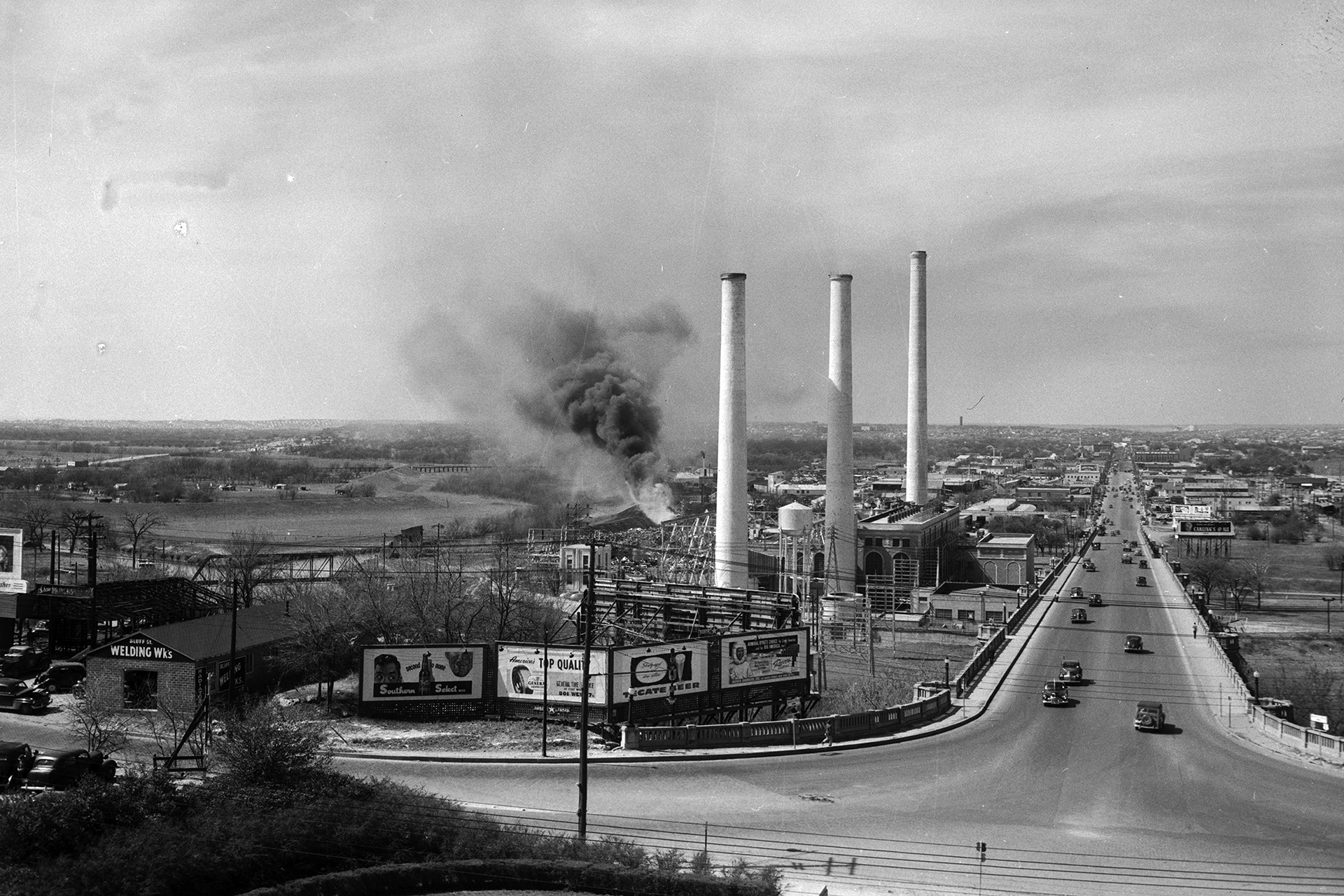
Early Electric Service in Arlington
This article appeared in the Citizen-Journal's 75th anniversary issue, February 1972
The early history of electricity in Arlington is a “corny” story. It seems that the first light plant had to burn corn cobs to generate the electricity. It was in 1904 that a corn-shelling plant, owned by A. W. Collins, provided Arlington with its first electricity. While other cities got electric service from ice plants or gins, Arlington went the corn route.
At dusk, when the day’s shelling work was finished, the belt of the steam engine was switched over to an electric dynamo to supply light for about 50 downtown stores, offices, and a few homes.
For fuel, the corn-shelling plant burned cobs and shucks, but in the season when the pile of cobs ran low, the firemen mixed lignite coal with refuse from the shelter and produced steam for the engine. The corn-shelling plant was located on a creek close to South and Center Streets.
Electric service in 1904 was only for lighting and the plant started operating at dusk and ran until 11 p.m. on weekdays. On Saturday, the plant chugged along until midnight. In the winter, the plant started early in the morning—around 4:30 or 5 a.m. and ran until daylight so early risers could have light.
There were no electric meters in 1904 and customers merely paid so much for each light they had in their store, office and/or home. These were small lamps that provided only a little more light than an oil lamp.
In 1906, A. W. Collins, with W. C. Weeks, W. M. Dugan and Col. Spruance invested $10,000 to provide the city with a larger electric plant. They built an addition to the corn-shelling plant to house a new generating unit and extended wires to parts of the residential area. The plant operated at 220 volts direct current and all lamp bulbs were 220 volts.
The first full-time electric service enjoyed by Arlington citizens was available in 1913 when the electric system was purchased by the Northern Texas Traction Co., whose high voltage power lines ran through Arlington supplying power for the Dallas—Fort Worth Interurban line. The traction company rebuilt the electric distribution lines in the city. They supplied electricity at a 25 cycle alternating current, 115 volts. The old 220 volt light bulbs wouldn’t burn with this lower voltage, so the company exchanged 115 volt bulbs for the old ones.
With high-line electric service available, Arlington had sufficient power for the first time for local industries. The 25-cycle service, though ideal for Interurban and street car operation as well as factories’ electric motors, produced a continuous flickering in electric lights in the home. The first large user of the electric power in Arlington was W. A. Bowen, owner of the Arlington Journal, which used a large motor to run his big press.
In 1926, a new high line brought Arlington 60-cycle electric service, and this eliminated the flickering problem of 25 cycle service, but created another problem. The company spent much time and money exchanging fan motors and other motor-driven appliances for customers with this new 60-cycle service.
The Texas Electric Service Company bought the electric properties in 1930 and at last Arlington had what had become the standard type of electric service.
Prior to 1917, the price was 15 cents per kilowatt-hour and the minimum monthly bill was $1.50. In 1917, it dropped to 12 cents per kilowatt-hour for the first 25 kilowatt-hours, with the balance of kilowatt-hours at 10 cents each. The minimum monthly bill was $1.00. In 1940, electric rates in Arlington started at a top price of 5 cents per kilowatt-hour, and after the minimum had been used the rate dropped to 2 cents per kilowatt-hour.
